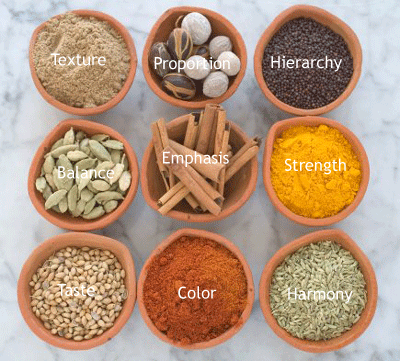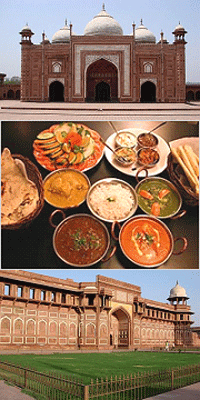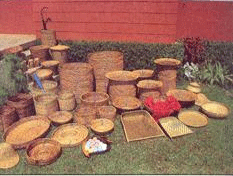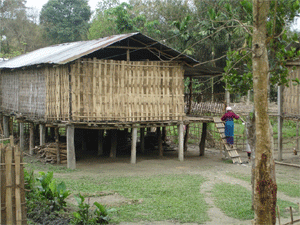Apr 19, 2025
Apr 19, 2025
by Rachna
Introduction
The relation between Food and Architecture is so deep and obvious that it's just not pondered over. The similarities are by far too many and hence mostly ignored. The presence of food in architecture and vice versa can be felt not only in the building construction of the architectural structures but can also be seen in the evolution of designs and the process henceforth.
Existent Similarities
Food when thought of first comes as a basic need for survival and sustainability. Similarly, architecture leads to buildings required for shelter and hence sustainability. Of all the basic requirements of a man food and shelter are paramount. For any food preparation the first thing required is the assembling of ingredients and then the formulation according to a recipe. In architecture, these ingredients are what are termed as requirements which are decided by the clients and his budget and time affordability. After which the design is modulated on basis of the building type.
 What ingredient to use and when with what amount is fixed. Excess of one or delay in adding the other mars the food texture, nutrients and mainly the taste. In architectural construction and design again one has to follow the proper execution techniques to get a better or good design. The design principles are to be followed in Order.
What ingredient to use and when with what amount is fixed. Excess of one or delay in adding the other mars the food texture, nutrients and mainly the taste. In architectural construction and design again one has to follow the proper execution techniques to get a better or good design. The design principles are to be followed in Order.
Food varies according to region. The factor governing this is the availability of constituents which in turn is governed by climate. Different regions have their different cuisines which is true for architectural buildings also. As in food different tastes can be enjoyed occasionally but only the local staple diet is most relished constantly on daily basis. So in buildings one can have different vernacular styles anywhere one plans but the comfort level that comes with the regional architectural details cannot be achieved. As in food one has to alter and redefine the ingredients to suit the palate of the people of the area to make it acceptable.
 Architectural building details have to be modulated with judicious design inputs to make the structure more sustainable. That's what a successful fusion is: Fusion food; fusion Design. These fusions can be observed in our daily dealings. The most important and break through fusions include the Mughal Style of Architecture and similarly the Mughlai Cuisine. The Persian mix of elements and design techniques was added to the Hindu planning style similarly Persian ingredients were amalgamated in the Hindu recipes or vice versa. Judicious fusions have been accepted so very well in the society that now they are not considered the part of the vernacular style but have been transformed into a new original style of living, be it language, attire, food or architecture.
Architectural building details have to be modulated with judicious design inputs to make the structure more sustainable. That's what a successful fusion is: Fusion food; fusion Design. These fusions can be observed in our daily dealings. The most important and break through fusions include the Mughal Style of Architecture and similarly the Mughlai Cuisine. The Persian mix of elements and design techniques was added to the Hindu planning style similarly Persian ingredients were amalgamated in the Hindu recipes or vice versa. Judicious fusions have been accepted so very well in the society that now they are not considered the part of the vernacular style but have been transformed into a new original style of living, be it language, attire, food or architecture.
"Too many cooks spoil the porridge", this saying is true for any architectural building one has to get a design as a single team changing the architects at various stages usually leads to a clutter or too many design suggestions and influences leaves one confused and the ultimate design : chaotic.
The ingredient, the sole ingredient that can mar any well cooked and well presented food; is the salt (or the sugar as many sweet-toothed architects will rightly point out). For example in southern Indian cooking one of the staple ingredients in food preparation is coconut: the reason being it is readily available there. Its easy availability is due to the climate there which is hot-humid and ample rainfall. As a result the roof style and the planning style have to be the sloping kinds.
 If we look at the Konkani belt of our country (some readers can easily relate to Goa) the staple food is fish and other sea food reason being the close proximity to sea and if we look at the architectural details one cannot provide metal fastenings, nuts and bolts as they easily corrode due to salt in the atmosphere. One glance at the utensils and the building structures in the north-eastern parts of our country makes us understand the connection: the material: bamboo is common for both.
If we look at the Konkani belt of our country (some readers can easily relate to Goa) the staple food is fish and other sea food reason being the close proximity to sea and if we look at the architectural details one cannot provide metal fastenings, nuts and bolts as they easily corrode due to salt in the atmosphere. One glance at the utensils and the building structures in the north-eastern parts of our country makes us understand the connection: the material: bamboo is common for both.
 An architect is that essential ingredient in the recipe of architecture. If elements of design are the masala (spices) then the architects input is the namak (salt). The food cooked by an experienced person or an expert always appetizing and healthy. The building designed by an architect is always better than say an engineer. It's the technique and experience that matters and an architect knows how to treat the buildings well.
An architect is that essential ingredient in the recipe of architecture. If elements of design are the masala (spices) then the architects input is the namak (salt). The food cooked by an experienced person or an expert always appetizing and healthy. The building designed by an architect is always better than say an engineer. It's the technique and experience that matters and an architect knows how to treat the buildings well.
21-Feb-2009
More by : Rachna